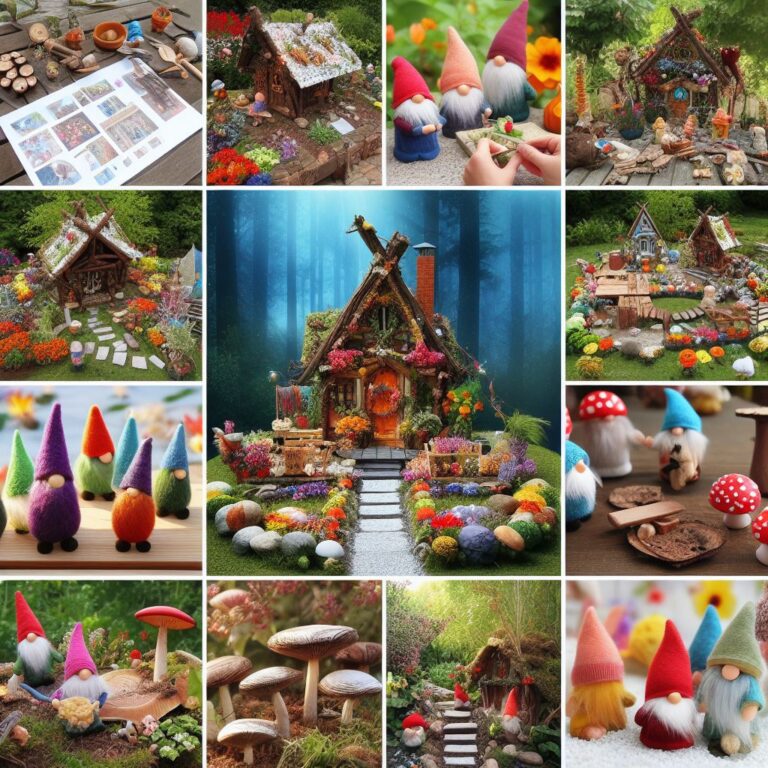How to Train Your Cat to Respect Your Gnome Collections
As cat owners know well, cats have a unique way of interacting with their environment – including objects like garden gnomes that humans often find charming. Unfortunately, these interactions don’t always end happily for the tiny figurines we love so much. Fortunately, there are ways to train your feline friend to respect your gnome collections without compromising its natural curiosity or playfulness. This guide will walk you through the process step by step, helping both you and your cat live harmoniously alongside one another while maintaining your beloved gnome sanctuaries.
Section I – Preparing Your Environment
Before beginning any training process, it’s essential first to prepare your home environment so that it supports success rather than hindering progress. Here are some tips:
- Provide multiple escape routes from high places: Ensure there are stairs leading down from surfaces where your gnome collection might be displayed. Cats may jump onto shelves but need easy access off them if they feel unsafe or scared by something new in their surroundings.
- Place gnomes strategically away from potential hiding spots: Cats can easily hide behind furniture or even under beds; place gnomes far enough apart that this isn’t possible. It’s also wise not to leave them out during night hours as cats tend towards being nocturnal creatures themselves!
- Install anti-scratch materials near gnome areas: Scratching behaviors aren’t just limited to furniture legs – many cats enjoy scratching surfaces too! Installing anti-scratch material (either carpeted floors or specialized wallpaper) close by will give your kitty an alternative place to channel those instinctive urges without damaging anything precious within reach.
- Use deterrent sprays and collars temporarily: Sometimes using mild pheromone-based deterrent sprays or collars can help curb unwanted behavior initially until better habits form naturally over time. However, remember that these should only ever serve as short-term solutions due to potential long-term effects on both pets and owners alike.
- Remove tempting items before starting: Remove anything else attractive lying around such as small toys, ribbons, etc., which could distract your pet from focusing solely on learning how best behave around delicate pieces like garden gnomes.
- Reward positive behavior consistently: Remember to reward every instance of good behavior when training your furry companion. Positive reinforcement helps encourage desired actions while discouraging negative ones associated with potentially destructive activities involving valuable possessions like gnomes.
Section II – Introducing Gnomes Gradually
Now that your home environment is ready for introducing gnomes gradually, follow these steps carefully:
- Start slow: Begin by placing just one gnome somewhere accessible yet secure, preferably on top of a stable piece of furniture like a table or shelf.
- Supervise closely: As your cat explores the new object, remain nearby to observe and correct any undesired behaviors immediately (i.e., avoiding biting, knocking over). Praise appropriate responses positively throughout each session.
- Move slowly toward integration: After several successful sessions with individual gnomes spread out across different locations, try grouping them together in clusters. Continue supervising closely until confident they won’t be harmed intentionally or accidentally during playtime sessions involving multiple figures simultaneously.
- Add variety: Once your pet seems comfortable playing around single units scattered throughout the house, start incorporating different types/styles of gnomes into its routine (e.g., ceramic versus wooden varieties). This will help prevent boredom setting in, which could lead back to previous destructive tendencies exhibited earlier on in training efforts.
- Encourage interaction: Allow your cat to touch, sniff, and examine each newly introduced figure carefully. By doing so, you’ll teach it that these objects belong within its environment and shouldn’t be treated aggressively or roughly handled under any circumstances.
- Offer alternatives: Lastly, consider providing alternative forms of stimulation beyond just physical contact between your furry friend and fragile collectibles like garden gnomes. This might include toys designed specifically for cats (like feather wands), scratching posts, climbing trees, etc., which can offer engaging activities that do not involve direct manipulation or handling of breakable items.
Training your cat to respect your gnome collections requires dedication, patience, understanding, and consistency on behalf of both owner and pet alike. However, by following the guidelines laid out above, you can create an environment conducive for coexistence between two very different species while still allowing everyone involved plenty of room to express their individual personalities freely within reasonably controlled boundaries set forth during initial stages of training efforts.







